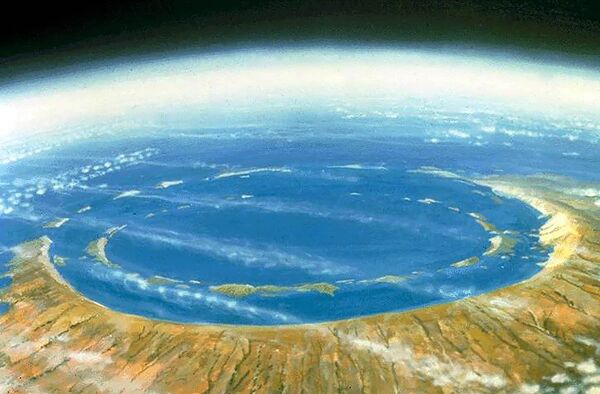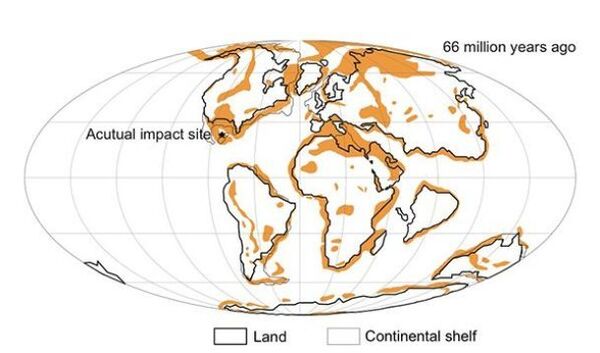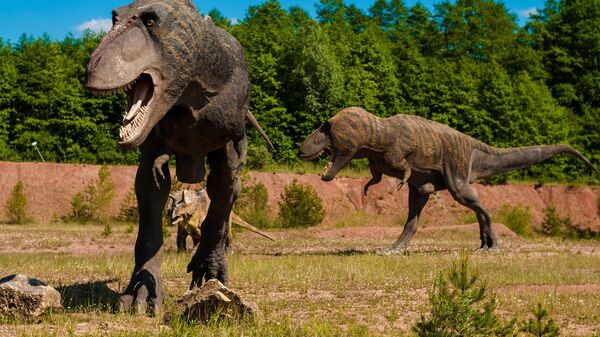Scientists believe that a mass extinction of animals, including the dinosaurs, occurred after a 9-kilometer wide asteroid struck the Earth 66 million years ago. The event created the Chicxulub crater in Mexico's Yucatan Peninsula and ended the Cretaceous Period of the Earth's history.
The impact heated hydrocarbon and sulfur in the Earth's rocks and caused masses of soot and sulfate particles to be released into the stratosphere. Thiscooled the climate by 8-10 degrees Celsius and led to the extinction of three-quarters of all species on Earth, including non-avian dinosaurs and animals which lived in warm water. Cold-water dwelling animals such as crocodiles survived the event.

"The probability of mass extinction occurring after an asteroid that could hit a random location on the Earth’s surface was approximately 13% when the Chicxulub-scale asteroid hit the Earth," Kunio Kaiho and Naga Oshima wrote in their paper, published in the journal Scientific Reports.
They found that soot is "likely to have been more important than sulfate as a cause of mass extinction," and that hydrocarbon-rich areas comprise just 13% of the Earth's surface. Areas which are rich in hydrocarbons and sulfur comprise just 1% of the Earth's surface.

At the time of the impact, "these hydrocarbon-rich areas were marine coastal margins, where the productivity of marine algae was generally high and sedimentary rocks were thickly deposited. Therefore, these areas contain a high amount of organic matter, part of which becomes soot with the heat of an impact."
As a result, a minute change in the asteroid's trajectory might have been enough to avert the mass extinction.
"The history of life on Earth could have varied, then, according to impact site, and depended on minute differences in the orbital forcing of asteroids … If the asteroid had hit a low–medium hydrocarbon area on Earth, mass extinction could not have occurred and the Mesozoic biota (plant and animal life) could have persisted," the researchers wrote.



